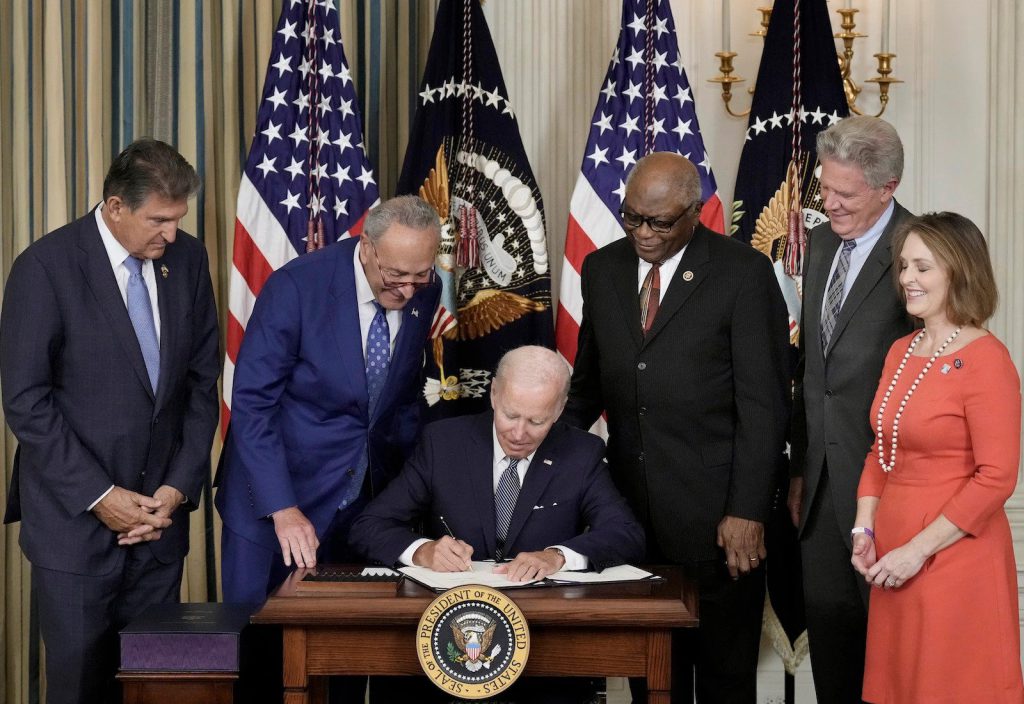With sky-high inflation prints, supply chain imbalance, global effects of Russia-Ukraine conflict and FEDs quantitative tightening and stimulus influx, 2022 was full of surprises.
On August 16, 2022, President Joe Biden signed The Inflation Reduction Act of 2022 (IRA). This marks a landmark in United States law which aims to curb inflation by reducing the deficit, lowering prescription drug prices, and investing into domestic energy production while promoting clean energy.
This bill on the broader prospectus more favorable to the climate and environmental development, thus in turn shifting the focus of major institutions towards ESG.
The bill will pour $369 billion in subsidies and tax credits into electric vehicles, renewable energy, carbon capture and storage, and more. With this, the IRA is projected to reduce total U.S. greenhouse gas emissions 40% by 2030, putting the United States back in shooting distance of its Paris Climate Agreement emissions reduction goals.
Fred Krupp, a longtime champion of congressional action on climate change and head of the Environmental Defense Fund, a green group, said “This has been decades in the making, and it will reshape the decades ahead…”
The IRA is expected to advance decarbonization in below ways
Tax Credits for Renewable Energy
At the center of the IRA’s remit to reduce greenhouse gas emissions is a system of tax credits for renewable energy. This includes the Renewable Energy Production Tax Credit, which provides tax relief for manufacturers of solar, offshore wind, geothermal, hydrogen, nuclear. The bill also includes energy loans and reinvestment financing for energy-related projects, subsequently incentivizing U.S. based renewables manufacturing.
Funding for High-Carbon Industries
Agriculture, real estate, and shipping industries are the victors in this provision, with $300 million allocated to the National Resources Conservation Service for emissions reduction and carbon capture, $2 billion allocated to reduce emissions at shipping ports, and new tax deductions for converting existing real estate assets into high-efficiency green buildings.
In relation to carbon reduction, the bill increases the 45Q tax credit for companies that build and operate carbon capture and storage facilities from $50 to the now $85 per ton, for the purposes of incentivizing carbon sequestration advancements in hard-to-abate sectors like cement, steel, and refining.
Funding for GHG Emissions Reporting
The IRA provides $5 million for the Environmental Protection Agency (EPA) to support the “standardization and transparency” of corporate climate disclosures, signaling to companies that quality control for non-financial indicators of performance such as energy efficiency and waste management will become increasingly significant for companies of all sizes. It also aligns to the new rules in the SEC’s Climate Proposal.
Grants for Climate Resilience and Adaptation
In addition to reducing carbon emissions, the IRA provisions could generate enormous public health and jobs benefits, preventing up to 3,900 premature deaths from air pollution in 2030, in addition to 99,000 to 100,000 avoided asthma attacks, and 405,000 to 417,000 avoided lost workdays.
The transportation sector is the largest contributor to U.S. greenhouse gas emissions and spews massive amounts of toxic air pollution into communities across the country. This bill will help transition the sector away from fossil fuels and invest billions in zero-emissions transportation, including:
- $3 billion for the U.S. Postal Service to electrify its fleet of more than 217,000 vehicles, the largest government fleet in the nation.
- $1 billion for clean school and transit buses, garbage trucks, and other heavy-duty vehicles, prioritizing communities overburdened by air pollution.
- $3 billion to clean up air pollution at ports by installing zero emissions equipment and technology, with much of the funds going to portside communities that are breathing disproportionately high levels of toxic air pollution.
- Tax credits for electric vehicles.
Conclusion
The Inflation Reduction Act is more than just a climate act, it is an investment in American economy and climate. This heavy focus on decarbonization and environment protection from the government will force institution investors and big players to concentrate on the ESG movement across countries.
Sources:
- https://www.pwc.com/us/en/services/esg/library/inflation-reduction-act-climate-considerations.html
- https://www.crfb.org/blogs/whats-inflation-reduction-act
- https://earthjustice.org/brief/2022/what-the-inflation-reduction-act-means-for-climate
- https://www.eisneramper.com/inflation-reduction-act-means-esg-sustainability-0822/
***



